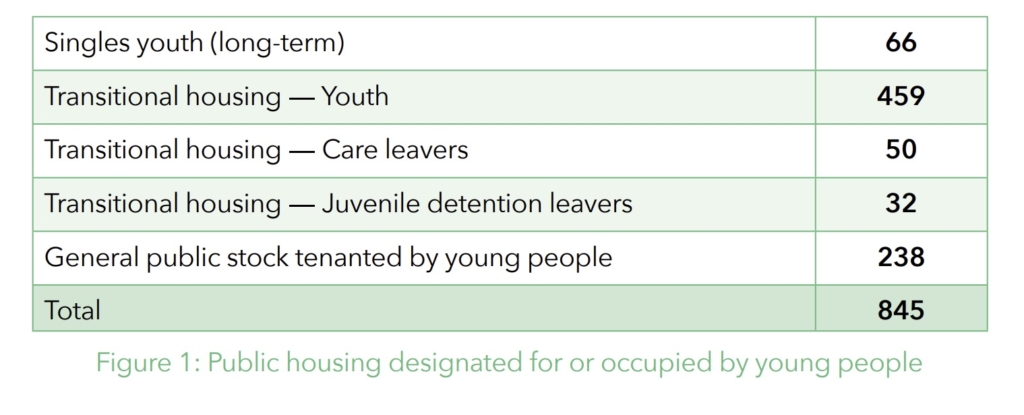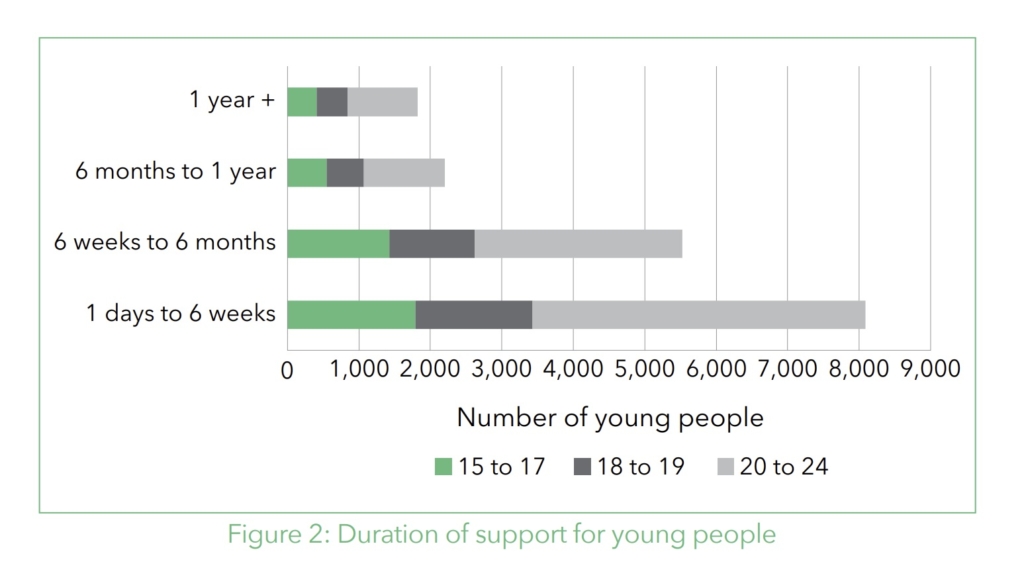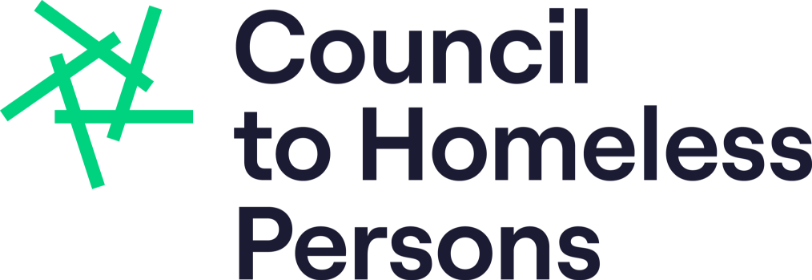by Damien Patterson, Policy and Advocacy Officer, Council to Homeless Persons
This article was originally published in Parity magazine. Learn more about Parity magazine including how to access full editions.
Young people and homelessness
Young people experience homelessness at extraordinarily high rates. In 2020–21, one in six homelessness service clients were aged 15 to 24; and 13,000 of those young people were presenting alone.
The pathways young people follow into homelessness differ from older groups, with family violence, family breakdown, neglect, or abuse the major causes for them fleeing a familial home. These experiences cause significant disruption and trauma during a time of life that is already characterised by change. Supporting young people to exit homelessness and to achieve their life goals, often in the absence of parental support, requires specialist and often intensive supports.
Victoria has a number of youth homelessness services and programs, but these are not integrated into a joined-up system of support for young people. Scarcity of youth specific programs means many young people accessing Specialist Homelessness Services (SHS) receive responses designed for adults. The next Victorian Government should provide a youth homelessness strategy to deliver targeted approaches to prevent and respond to youth homelessness.
Preventing youth homelessness
A new youth homelessness strategy should include a focus on preventing homelessness for young people. Young people don’t choose homelessness — they choose, or are told, to leave their home to stop the conflict.
In some instances, the family home is not safe, and young people should always be involved in a safety assessment prior to engaging in family reconciliation. But for most young people whose family home is free from violence, reconciling with family and returning home is not only the safest option, and the one that would immediately end their homelessness, but it is also the option most likely to help them achieve good outcomes, like finishing their education.
Family mediation and reconciliation should be available whenever it is needed. The starting point for ending youth homelessness should be to fix things at home.
Housing for young people
Dedicated housing is also required for young people without homes. Securing affordable and appropriate housing for young people is especially challenging because they have much lower incomes than older adults, they face discrimination in the rental market, and they often need support to sustain a tenancy. On average, it requires deeper subsidies to provide social housing models that meet the specific needs of young people relative to older adults.
Currently in Victoria only 541 transitional and 66 long-term properties are designated for young people, and in 2021 young people were allocated only 238 public housing tenancies.
A diverse range of housing models is needed as some young people will thrive in independent units with minimal support, while other young people achieve great stability in shared living arrangements and need more intensive support. The Council to Homeless Persons (CHP) is calling on the next Victorian Government to deliver 5,000 new social housing properties for young people —as well as the support that they need to live in them.

A case management model fit for young people
Young people who can’t live with their parents may need support to develop life skills and manage transitions that other young people would receive in a supportive family, and additional support to recover from the trauma, violence or neglect that resulted in their homelessness.
Yet currently, most support periods for young people using homelessness services are short. Almost half last for less than six weeks; 12 per cent, nearly 2,200 young people, receive support for a single day; and over 3,000 young people were turned away unassisted altogether. Many support periods are connected to accommodation, so when young people leave a youth refuge, they lose support as well as accommodation.
Childhood and adolescence are usually marked by significant and enduring support. A youth homelessness strategy should provide case management models that reflect the unique needs of young people.

A joined-up approach
CHP has recently released A plan to end homelessness in Victoria’ which details these and other measures needed to end homelessness —and youth homelessness. You can read more of what should be included in a youth homelessness strategy at www.chp.org.au.
This article was originally published in Parity magazine. Learn more about Parity magazine including how to access full editions.

